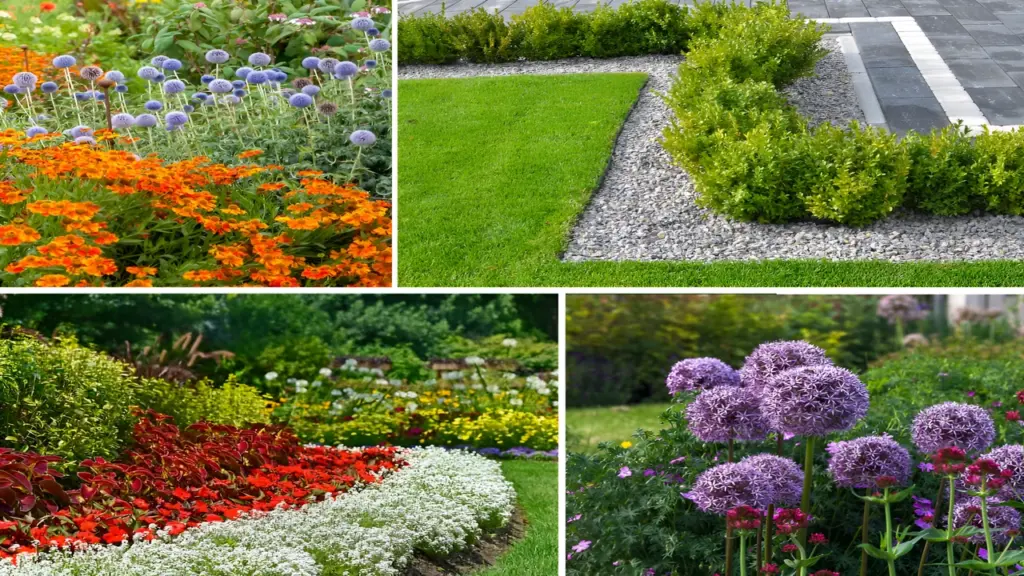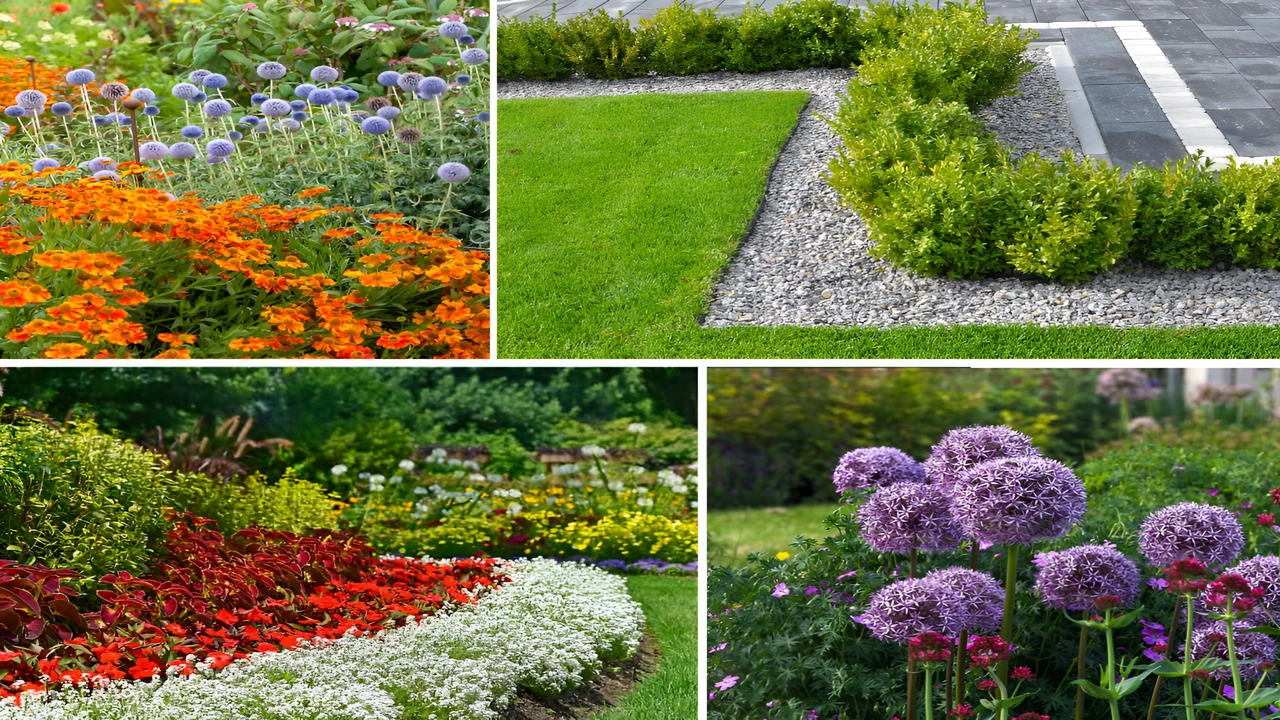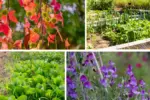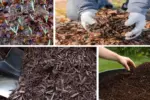Join on WhatsApp
Get the latest updates directly on WhatsApp – motivation, news & more!
Creating a welcoming outdoor space doesn’t just happen with a few chairs and a barbecue grill. The beauty of any patio or backyard often lies in the details—and few elements define those details better than well-chosen border plants. They guide the eye, soften harsh edges, and offer color, texture, and structure that make your yard feel intentional and alive.
But how do you decide which border plants are right for your space? The answer depends on more than just what looks good at the garden center.

What Are Border Plants—And Why Do They Matter?
Border plants are low to medium-height plants that define the edges of garden beds, patios, walkways, and lawn areas. Think of them as natural outlines that shape your outdoor space. These plants help organize your garden visually while also offering practical benefits like weed suppression, erosion control, and even pollinator support.
While they may not be the stars of your garden show, border plants are the essential supporting cast that helps your landscaping design feel complete.
How to Choose Border Plants That Actually Work for You
Before you fill your cart with random perennials and shrubs, take a step back. The right border plants complement your layout, work with your climate, and make your life easier—not harder. Here’s what to consider:
1. Understand Your Light Conditions
Not all plants love the sun. Others can’t handle shade. Track how sunlight moves across your yard throughout the day. Is the border you’re planting in full sun (6+ hours)? Partial shade? Mostly in shadow?
Knowing this simple fact will save you time, money, and frustration later on.
2. Know Your Soil Type
Grab a handful of your garden soil. Is it sandy and loose? Sticky like clay? Somewhere in between? Most plants prefer well-draining loamy soil, but some are happy in clay or rocky ground. If needed, amend your soil with compost to improve structure and nutrition.
3. Factor in Climate and Hardiness
Every plant has a USDA Hardiness Zone range. Know your zone, and choose plants that can survive your winters (or hot summers). Native and drought-tolerant species often thrive with less work and water.
4. Think About Mature Size
Don’t just look at how cute a plant is in its pot. Always check the label for mature height and spread. A plant that grows to 3 feet wide will overtake a narrow path if not planned for. Choose compact varieties for tight areas, and taller ones for back-of-border layering.
5. Pick Plants That Fit Your Maintenance Style
If you like a wild, natural look and don’t mind occasional pruning, go for perennials and ornamental grasses. If you prefer neat, formal lines, evergreens or shaped shrubs might be your style. Want low-effort? Avoid plants that require constant deadheading or are prone to disease.
Best Types of Border Plants by Style and Function
For Colorful, Seasonal Interest
These plants bring bold hues and blooms that shift with the seasons:
- Lavender – Great for sunny spots; smells amazing.
- Coneflowers (Echinacea) – Long-blooming and drought-resistant.
- Nepeta (Catmint) – Silvery foliage with purple flowers.
- Coreopsis – Bright, cheerful, and low-maintenance.
For Evergreen Structure
Want your borders to look good even in winter? These are your go-to options:
- Boxwood (Buxus) – Dense, easy to shape, and tidy.
- Dwarf Holly – Hardy with glossy leaves and seasonal berries.
- Mugo Pine (Dwarf Varieties) – Adds texture and a touch of rugged green.
For Texture and Movement
Ornamental grasses give borders a relaxed, flowing feel:
- Blue Fescue – Compact mounds with cool-toned blades.
- Japanese Forest Grass (Hakonechloa) – Great for shaded edges.
- Pennisetum ‘Hameln’ – Soft, fluffy plumes in late summer.
For Low-Growing Edges
These creepers and compact plants fill space without getting in the way:
- Creeping Thyme – Fragrant, edible, and walkable.
- Ajuga (Bugleweed) – Bold foliage and ground-hugging growth.
- Sedum (Stonecrop) – Ideal for dry, sunny borders.
For Edible and Decorative Use
If you want beauty and a harvest, these options multitask:
- Parsley and Chives – Great for edging kitchen gardens.
- Strawberries – Low, lush, and productive.
- Trailing Rosemary – Evergreen with culinary value.
Design Tips: Make Your Borders Look Like a Pro Did Them
Repeat Patterns
Using the same plants or color combinations along a border helps create rhythm and unity. Too many varieties in one area can look messy or chaotic.
Layer Heights
Arrange plants in rows: low growers in front, medium in the middle, and tall ones in the back. This adds depth and ensures everything is visible.
Mix Foliage and Form
Don’t rely only on flowers. Mix fine, grassy textures with broad, bold leaves. Contrasting foliage colors—like silver, burgundy, and deep green—add visual drama even when plants aren’t in bloom.
Plan for All Seasons
Choose plants with staggered bloom times and evergreen structure. That way, something always looks good, whether it’s spring bulbs or autumn grasses.
Real-World Example: 8-Meter Border Beside a Backyard Patio
Goal: A vibrant, low-maintenance edge that softens the patio while adding fragrance and color.
Plants Used:
- Lavender ‘Munstead’ – Fragrant evergreen base
- Salvia ‘Caradonna’ – Vertical spikes in summer
- Sedum ‘Matrona’ – Bold leaves and late blooms
- Creeping Thyme – Soft filler at the edge
- Festuca ‘Elijah Blue’ – Color and texture contrast
Layout Tip: Group in odd numbers (3s or 5s) and repeat the pattern down the length. Keep a spacing of 30–40 cm between plants for airflow and mature growth.
Avoid These Common Border Planting Mistakes
- Planting too close – Crowding leads to poor airflow and plant stress.
- Ignoring sun/shade needs – Sun-loving plants won’t thrive in deep shade.
- Skipping maintenance realities – Even “easy” plants need some care.
- Choosing invasive species – Avoid plants that spread aggressively without control (like mint or bishop’s weed).
Final Thoughts: Borders That Balance Beauty and Function
The best border plants enhance your space without demanding constant upkeep. They add charm, define areas, and guide movement through your garden. With a little planning, you can create borders that are as practical as they are beautiful—whether you’re aiming for a polished formal edge or a wild, nature-inspired frame.
Start small, experiment with combinations, and don’t be afraid to revise. The edge of your garden is just the beginning of what it can become.




